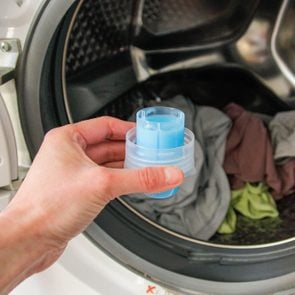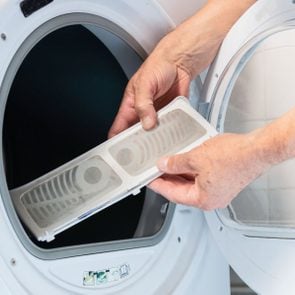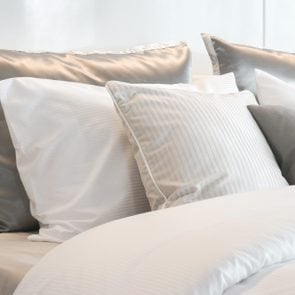What Does Fabric Softener Do—and Is It Good or Bad for Your Clothes?
Updated: Apr. 18, 2024
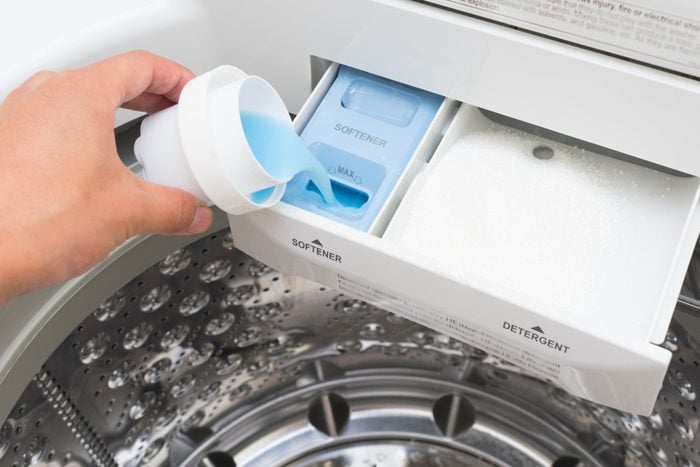
It's time to air the dirty laundry—about fabric softeners, that is. Here's what they do, and whether you even need to use them.
Doing laundry is a chore I learned early in life. And for the longest time, I stuck with the same techniques, never questioning the process. What does fabric softener do? Why do I need it? And should I really waste my money on the stuff? Those questions never crossed my mind. Then nearly 15 years ago, I became a cleaning editor and finally adapted my methods. Now I know that the textile and laundry-care industries have made major advancements in efficacy, efficiency and the overall experience, changing the rules for some age-old approaches—including the use of fabric softener.
So what does fabric softener do exactly, and is it something you should be using? I reached out to a professor of fiber science, a fabric scientist at Proctor and Gamble, a second-generation laundry professional and an expert at Whirlpool to discuss the pros and cons of fabric softener so you can determine whether it’s worth keeping as part of your laundry repertoire, or if it’s a step you can eliminate from the chore.
Get Reader’s Digest’s Read Up newsletter for more cleaning, humor, travel, tech and fun facts all week long.
About the experts
Reviewed for accuracy by: Mary Marlowe Leverette, a highly regarded fabric-care, stain-removal and housekeeping expert with more than 40 years of experience. |
What does fabric softener do?
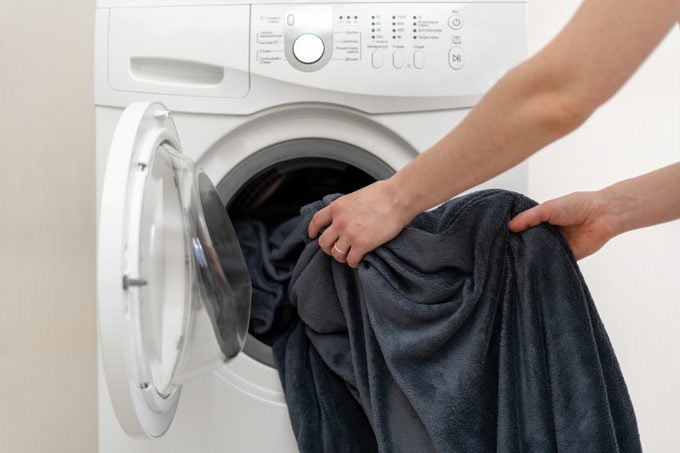
“As the name implies, fabric softener makes clothes softer, thanks to properties that coat the fibers in your clothing and work to soften them during the laundry load,” explains Whirlpool’s Morgan LaLonde. It can also help reduce static, prevent wrinkles and add fragrance.
A softness boost may sound simple, but there’s some science involved: “Fabric softeners basically add an electrically charged chemical coating to fabrics that lubricates them and makes them feel softer by causing fiber ends to stand up,” says Frances Kozen, the senior lecturer at the Human Centered Design Department at Cornell University. “It holds moisture, which reduces electrostatic buildup, meaning less static cling and less lint or dust buildup on the fabric surface.”
You may be surprised to hear that the laundry process can actually be quite damaging to clothes. Sammy Wang, a senior scientist for Downy, shares some facts about just how ruthless the wash can be:
- Clothes can spin as fast as 50 miles per hour in your washing machine.
- Clothes can be thrashed 3,000 times in every wash cycle.
- Dryers can get hot enough to cook ribs.
Yikes! It’s no wonder we’ve been turning to fabric softener for years. It can help repair the effects of the laundry process by smoothing and strengthening fibers to protect items during the wash.
Is fabric softener good or bad for clothes?
It’s complicated! Fabric softener has its perks and can be used occasionally, but it’s not the best option for every load. Natural fibers like cotton or linen tend to experience more damage during the washing process than other materials, and their hydrophilic (or water-loving) nature plays a role.
“That means they absorb water and swell when wet,” explains Wang. “When these swollen fibers get tumbled around during the wash, they can get damaged more easily, leading to fading, pilling or fuzzing. In the dryer, natural fibers can also be prone to shrinking or abrasion as they release the water they absorbed in the washer, which can lead to damage.” Treating the fibers with fabric softener will help protect them while also preventing fading, stretching and wrinkles.
But it’s not ideal for other fabrics, which can lose some of their flame-resistant and water-repellant properties when coated in fabric softener. The bottom line: Check each garment’s care label and treat them accordingly.
What are the problems with fabric softener?
For all the good it can do for your laundry, fabric softener isn’t universally useful. In fact, there are times when it’s better to avoid the stuff than risk aggravating sensitive skin or negatively affecting your clothing.
It can irritate skin
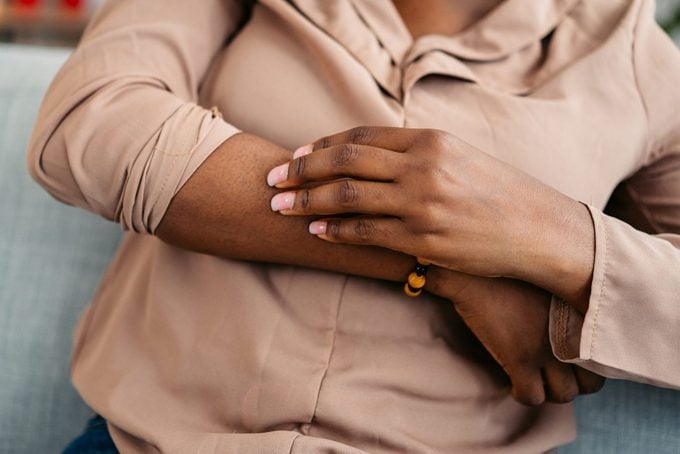
“Any additive has the potential to irritate sensitive skin,” says LaLonde. “Those with sensitive skin or allergies should avoid fabric softeners, fabric conditioners and dryer sheets altogether.”
If you’re looking for a compromise, Wang notes that some brands offer unscented or hypoallergenic fabric softeners to provide the same conditioning benefits while being gentle against sensitive skin.
It can reduce flame resistance
A word of caution: Never use fabric softener on children’s sleepwear. Those items are treated with flame retardants, as required by law and published in the Code of Federal Regulations.
What does fabric softener do to these? It coats the fibers of flame-resistant fabric, leaving behind a film that causes the material to work less effectively, LaLonde warns.
“As stated on fabric softener packaging, liquid fabric conditioner can increase fabric flammability,” Wang says. “Do not use fabric softener on children’s sleepwear or garments labeled as ‘flame resistant,’ as it may reduce flame resistance.”
It’s bad for certain fabrics
“Avoid using fabric softener on water-repellent fabrics, flame-resistant fabrics, towels, athletic wear and microfiber,” says LaLonde.
Kozen explains that using fabric softener on water-resistant outerwear (like Gore-Tex) would “impede the function of microporous, breathable, water-repellent membranes and attract moisture to the outer surface that is meant to resist water.” Additionally, it can reduce towel absorbency.
| ♦ Pro tip |
| “If you accidentally use fabric softener on a garment you didn’t intend to, don’t fret,” says Wang. “A follow-up wash cycle with a high-quality detergent will help remove the softener.” |
When should you—and shouldn’t you—use fabric softener?
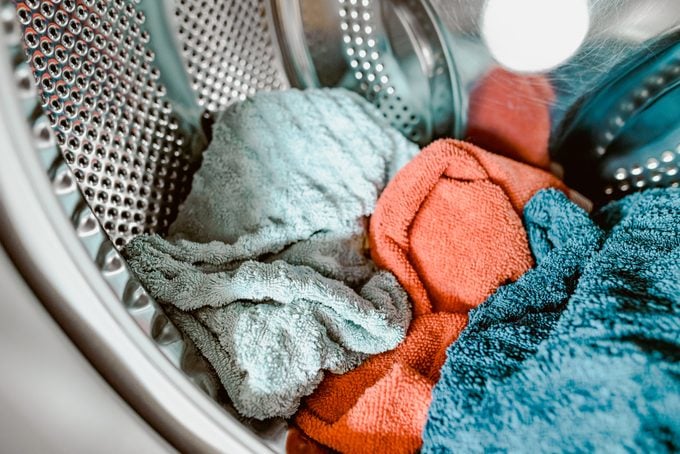
Pay attention to the fabric type, stresses LaLonde, and make sure it’s compatible with softeners by checking the care label. You also want to address the needs of your laundry: Do you want to soften rough fabrics? Lessen pilling? Get rid of static? Figure that out first, then determine if a fabric softener would benefit your next load, she says.
Use fabric softener when you want to:
- Fight fading on new, dark clothes (like dark or black denim, says Wang)
- Soften rough materials
- Minimize wrinkles on natural-fiber clothing
- Repair damage (like fading, fuzzing or stretching)
Avoid fabric softeners on:
- Children’s sleepwear or other flame-resistant garments
- Towels and microfiber
- Water-resistant outerwear
How to use fabric softener
Prepare your wash load as normal, then determine where your fabric softener should go. “Many washing machines have a specific compartment for liquid fabric softeners that ensures the softener is dispensed at the right time during the cycle,” explains LaLonde. “If your appliance has one, simply add the liquid fabric softener there before starting the machine.”
Wang shares where to look for the softener dispenser on different types of washing machines:
- Front-loading HE washing machines typically have a pull-out dispenser tray.
- Top-loading HE machines have either a pull-out dispenser tray or a dispenser along the rim of the drum.
- Traditional top-loading machines have a dispenser in the center agitator.
If your appliance doesn’t have a fabric softener dispenser, try a dispensing ball instead, suggests Zachary Pozniak, a second-generation dry cleaner and laundry expert at Jeeves New York. Using one is a simple two-step process:
- Fill the ball with fabric softener according to the product instructions.
- Toss it into the drum along with your clothes.
“The spinning action of the washer’s chamber during the rinse cycle will pop open the ball’s lid,” Wang adds. That’s when the solution will reach your laundry. Heads up: You’ll want to avoid using the Downy Ball dispenser in a front-loading washing machine, “as the rinse cycle action will not activate the Downy Ball lid properly,” she says.
You can also add liquid or powder fabric softener yourself if your appliance does not have a dedicated compartment. Add it directly to the washer basin during the final rinse cycle, says LaLonde. This ensures that the detergent won’t wash away the softener beforehand.
| ♦ Pro tip |
| “Check your machine’s button panel (or read the user manual) to see if your machine requires activation of a fabric-softener setting,” says Wang. “Some machines require you to activate the ‘softener’ or ‘deep fill rinse’ cycle in order to ensure the fabric softener gets dispensed and added properly.” |
Alternatives to fabric softener
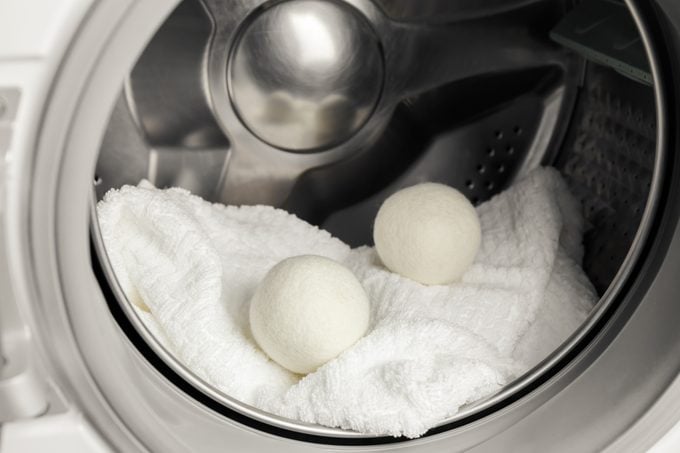
Fabric softener isn’t the only tool that will free your clothing of static and leave it smelling great. The products below work equally well.
- Wool dryer balls: These tennis-ball-size tools can help fluff clothes and speed up the drying process by absorbing moisture. You can even add a few drops of essential oil onto each ball to get the added benefit of fragrance infused into each load.
- Aluminum foil: You can make your own dryer balls by wadding up aluminum foil. This method is extremely cost-effective compared with fabric softener, and because the metal acts as a conductor, it should help reduce static cling.
- Scent beads: If you’re after fragrance, you can add scent beads to the washer’s drum before the clothing goes in. “This ensures that the scent beads come into contact with the water (which gathers at the bottom) immediately and start dissolving right away,” explains Wang.
FAQs
Do you really need to use fabric softener?
According to Pozniak, fabric softener was invented back when cotton fibers were incredibly stiff and itchy. Since then, the textile industry has made strides to make textiles more comfortable, therefore making fabric softener less crucial. Yet some folks still prefer to add it in. While it’s not necessary, it’s all about personal preference, he says.
“It is an easy additional step to laundry day if you’re looking for less static, fewer wrinkles and a pleasant scent,” adds LaLonde.
Will clothes get clean with just fabric softener?
Fabric softener is an additive, not a cleaner itself, so it needs to be used along with a laundry detergent. Pozniak equates fabric softener to hair conditioner; you still need shampoo to clean the hair before you soften or detangle it.
How can I make clothes smell good without fabric softener?
Fragranced detergents, scent beads or even hanging clothes outside to dry can help freshen up the smell of your laundry.
“For consumers who don’t want to use fabric softeners but are still looking for products that care for clothes like athletic wear or leggings, Downy has a new product called Downy Rinse and Refresh,” says Wang (who works for Downy parent company Procter and Gamble). “It’s used in the same dispenser slot and phase of the wash [the rinse cycle] as fabric softener, but it works differently.” The product helps to strip away buildup and odor that can get trapped in clothing.
Pozniak also recommends Tide Boost as a similar rinse-cycle remedy to help remove malodor and keep clothes smelling fresh.
Why trust us
At Reader’s Digest, we’re committed to producing high-quality content by writers with expertise and experience in their field in consultation with relevant, qualified experts in the tech-repair and cleaning industries. For this piece, Stephanie Sisco tapped her 15-year experience as a cleaning editor, and then Mary Marlowe Leverette, a highly regarded fabric-care, stain-removal and housekeeping expert with more than 40 years of experience, gave it a rigorous review to ensure that all information is accurate and offers the best possible advice to readers. We verify all facts and data, back them with credible sourcing and revisit them over time to ensure they remain accurate and up to date. Read more about our team, our contributors and our editorial policies.
Sources:
- Frances Kozen, senior lecturer in the Department of Human Centered Design at Cornell University; email interview, Jan. 23, 2024
- Sammy Wang, senior fabric-care scientist for Downy at Proctor and Gamble; email interview, Jan. 23, 2024
- Zachary Pozniak, professional dry cleaner and laundry-care expert at Jeeves New York; email interview, Jan. 11, 2024
- Morgan LaLonde, laundry brand manager at Whirlpool; email interview, Jan. 23, 2024
- AAAS: “Burning softly: A study of the effect of fabric softener on the flame resistance of clothes”

